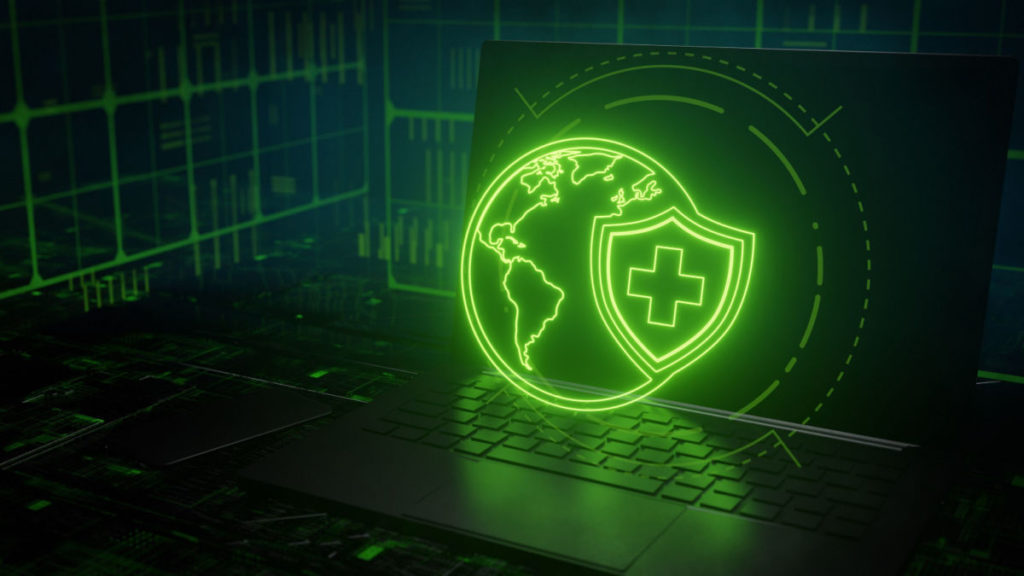As part of Acceleration Economy’s Cybersecurity channel, we’ll be looking at the new capabilities of cloud security that have led to new possibilities in healthcare.
Due to the Covid-19 pandemic, healthcare organizations have run into overwhelming challenges. Faced with everything from overcrowding and social distancing-instigated limitations to staff shortages and more, many healthcare institutions have turned towards cloud computing to adapt and thrive in this new environment.
Since the introduction of cloud in healthcare’s digital ecosystems nearly a decade ago, cloud-based infrastructure has been shown to provide better patient care and more streamlined operations to meet modern challenges. Of course, there have been challenges in the adoption of cloud, particularly in cybersecurity. Necessity has again shown itself to be the mother of invention, as many organizations and governmental bodies have enforced standards (such as HIPAA from the U.S. Department of Health and Human Services) to protect patients and healthcare institutions from harm.
Thanks to the diligence of the healthcare industry in the face of challenging times, plenty of new possibilities enable a more efficient, patient-centric, and cost-efficient healthcare ecosystem — all with better cybersecurity than ever before.
With new significant improvements in cloud security, many new capabilities have changed how efficient healthcare systems operate, including:
- Work-from-home and remote capabilities
- Better telemedicine
- Reduction of overheads
- Remote patient monitoring (RPM) devices
- Redundancies to prevent ransomware attacks
- Greater awareness of cybersecurity
- Delegation of security responsibilities to third-party security firms
- Automation frees up healthcare resources
Read on to learn about how each new capability is transforming how healthcare operates in 2022 and beyond.
1. Work-From-Home (WFH) and Remote Capabilities
Many healthcare organizations have seen the productivity benefits of working remotely (in a work-from-home (WFH) or hybrid environment) with cloud-enabled technologies. These advantages include:
- Attracting more talent that prefers remote and hybrid work environments — a perfect solution for the ongoing IT staff shortage in healthcare
- Broadening the available talent pool beyond geographical limitations (such as rural and underserved communities)
- Enabling staff to be productive in shorter time frames
- Making it easier for employees to achieve a more equitable work/life balance and easing healthcare burnout
As with any remote work that involves highly-sensitive data, training and adherence are of paramount importance when dealing with off-site staff. Because of the cloud’s improved security protocols with VPNs and encryption with multi-factoral authentication (MFA), remote work — particularly non-patient-facing staff — has never been more viable than today.
That said, healthcare has one of the lowest rates of remote workers in white-collar jobs, at 35%. Of course, as the pandemic continues for the foreseeable future, it seems likely that healthcare will rely more and more on an off-site workforce.
2. Better telemedicine
Telemedicine is nothing new in healthcare. However, in the past, telemedicine was rife with inefficiencies and security exploits that increased risk for cloud. This included a variety of attacks that threatened confidentiality, access, and the integrity of data.
Now that cloud infrastructure has caught up to end-to-end security capabilities and streamlined access for authorized users, telemedicine has increased in scope and usage. The following are some of the most promising usages of cloud-based telemedicine for patients and physicians:
- Virtual visits for prenatal and postpartum care, where expecting mothers gain more flexibility and convenience by eliminating the need to travel and other responsibilities.
- Pre- and post-operative care, where follow-ups via telehealth mean that patients can not only reduce potential exposure to disease and discomfort worsened by travel, but also facilitate participation for a patient’s loved ones to participate in their care.
- Ongoing care needs for those with chronic health issues, where offering virtual visits for patients with chronic conditions can give providers more touchpoints to promote medication and treatment adherence, answer patients’ questions about their care, and keep patients out of high-cost care settings only when necessary.
- Mental and behavioral health, where patients are able to receive the services they need in familiar environments, as well as reduce barriers to care (such as those with agoraphobia).
Best of all, patients are now empowered to choose telemedicine or in-person care for their own peace of mind, with less fear of compromised data or privacy risks. While many patients still prefer in-person medicine, there’s a large portion of the population that relies on the convenience of care when quality standards are not an issue, such as virtual checkups when combined with remote monitoring devices to track collected and real-time biometric data. To boot, increased security and privacy makes the telemedicine option more palatable to more people.
3. Reduction of Overheads
With the global pandemic leading to economic uncertainty and rampant inflation, healthcare organizations are looking for ways to cut costs without sacrificing care standards.
With remote working and minimized infrastructure needed for cloud-based solutions in a secure system, healthcare organizations are drastically reducing overheads, such as office space, non-essential workers, and medical supplies. Similarly, healthcare organizations are reducing spending costs by scaling their storage needs from secure cloud providers within budget restrictions. This, of course, increases the demand for cloud security needs.
4. Remote Patient Monitoring (RPM) Devices
Perhaps the greatest benefit to improved cloud security is the ability for patients to monitor their biometrics using cloud-enabled remote patient monitoring (RPM) devices. RPM devices are strictly vetted by the FDA and other governmental organizations for their security and adherence to compliance guidelines (i.e., patient privacy, location settings), providing a wealth of benefits. These benefits include:
- Verifiability for real-time and collection of patient data
- Adherence to treatment and medication plans
- Lowered costs for patients and providers
- Verifiable source of data for insurance payors
5. Redundancies to Prevent Ransomware Attacks
Ransomware attacks remain the most significant threat to the integrity of healthcare organizations. So, implementing a secure cloud-based infrastructure enables redundancy measures to offset these attacks. This is especially true for multi-cloud solutions, where multiple providers can offer redundancies for data storage, such as:
- Overlapping security measures
- Early detection
- Quarantining affected networks while operating mission-critical services for continuity of care and minimal business disruption
- Partitioning between mission-critical operational systems, public and patient-facing systems, and private networks
6. Greater Awareness of Cybersecurity
By the nature of the cloud, secure sharing of EHRs, PACS, and other healthcare data is a highly-digitized process. With healthcare staff regularly using the cloud and adhering to stringent protocols regarding digital hygiene, cybersecurity has never been more top-of-mind than today.
According to recent stats, almost 60% of C-suite executives report themselves as “very aware” of digital threats. Physicians and other healthcare professionals also report a heightened awareness of security measures, particularly in regard to adhering to HIPAA and other governmental standards. The net effect is a more robust security ecosystem.
7. Delegation of Security Responsibilities to Third-Party Security Firms
In response to the vulnerabilities of the healthcare industry, third-party security and compliance firms are a booming industry in healthcare. Offering their services to close the gaps in cloud computing security, these firms help reduce the demands on in-house and remote IT staff, freeing them to focus on daily operational tasks — not time-consuming security checks and continuous network monitoring.
Some of the most common forms of third-party cloud security services include:
- Infrastructure-as-a-Service (IaaS).
- Platform-as-a-Service (PaaS)
- Software-as-a-Service (SaaS)
Each of these security services offers different aspects related to a particular healthcare organization. For example, some security firms offer remote monitoring from off-site staff as well as on-site staff consultants that directly manage cloud-based infrastructure.
8. Automation Frees Up Healthcare Resources
Automation has become the norm in 2022, with many healthcare providers combining the ubiquity of the cloud with the dynamic power of AI and machine learning algorithms.
The capabilities of these technologies are immense for cybersecurity, providing automatic checks beyond human capabilities, instant detection, and security procedures to contain unauthorized access (among many other uses).
The net effect of automated cloud-based systems is that users can free up IT resources for processes that require human intervention and eliminate “grunt work” — a commonly-cited reason for IT staff burnout.
Conclusion
As you can see, cloud security, among other growing areas, has created a new paradigm of capabilities for healthcare providers, staff, and patients. While maintaining cybersecurity will, unfortunately, remain a critical part of maintaining infrastructure, the benefits of cloud computing will continue to set new benchmarks for what patients, providers, and other stakeholders expect in today’s healthcare ecosystem.
Stayed tuned to the Acceleration Economy to learn the newest cybersecurity and other tech trends that are changing how we experience healthcare globally today.







